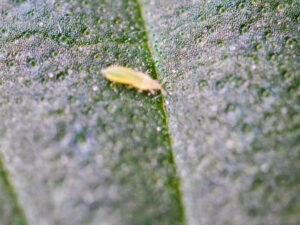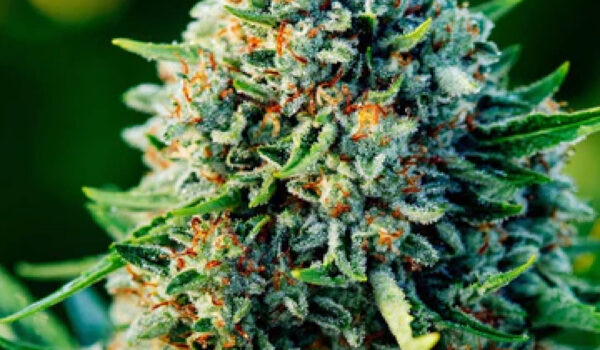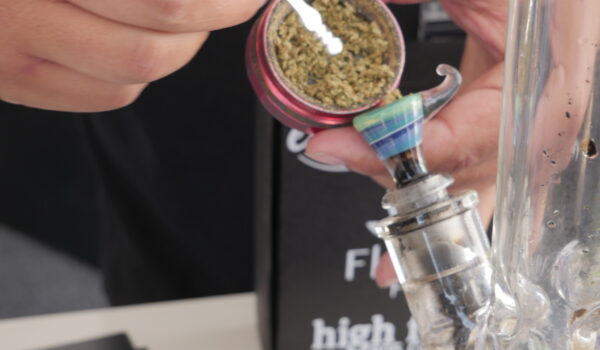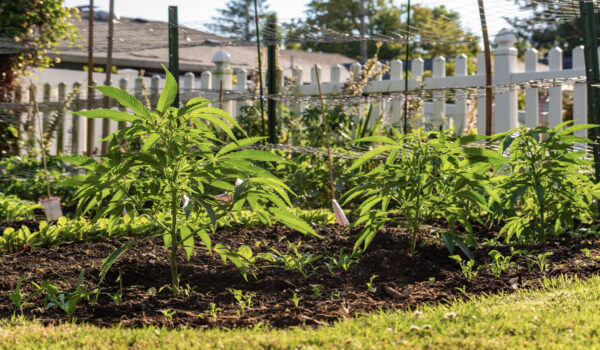
By Rincon-Vitova Insectary
Thrips
Thrips cause damage that is similar to spider mites; they tend to scrape the leaf surface to extract the chlorophyll. Thrips are tiny pests, capable of limited flight. Thrips damage plants by feeding on leaf and flower tissue, leaving a silvery appearance. They also lay eggs in leaves and flower tissue and in young developing fruit. This damages leaves and flower petals and causes distortions in fruit and in the growing points.
Identification
Both adult and nymphs are tiny, straw-colored, elongated insects, less than 1 mm (1/25 inch) long.
Adults have narrow, fringed wings; nymphs are wingless.
Life Cycle
Females lay eggs in leaf tissue.
The eggs hatch in five days 72 ºF.
Nymphs feed on plant tissue for approximately 8-10 days, and then drop to the ground to complete development in protected sites on the floor.
Multiple generations are produced annually and outdoors thrips can continue to survive and develop at a slower rate on available living plants that are present through the cold months (e.g., winter annual mustards, certain hardy perennials).
Monitoring
Look for silvery, striations/stippling.
Leaf and flower distortion are common signs of thrips.
Thrips move rapidly and prefer shelters in crevices and folds in foliage and flowers.
Use a Beat Sheet: gently shake foliage or flowers onto a light-colored sheet of paper, beating tray, or small cloth.
For thrips in buds, clip off several plant parts suspected of harboring thrips, place them in a jar with 70% alcohol (ethanol), and shake vigorously to dislodge the thrips. Strain the solution through filter paper to more easily see thrips.
Use yellow sticky cards and check/replace them checked regularly.
Cultural Practices
Overall plant health: avoid drought stress & excess Nitrogen.
Use yellow and blue sticky traps, – when used in large enough numbers, can become effective management tools.
Hang sticky cards just above plant canopy to catch the most thrips.
Increase the trapping rate 10 fold by sticking a cotton ball to the trap and adding a few drops of vanilla or almond extract
Plant bush or pole beans to attract thrips: early detection.
Soapy baths on the floor with vanilla, or almond or peppermint, has an amazing trapping effect on high populations.
Reflective Mulch reflects light interferes with certain flying insects’ ability to locate plants.
Both petroleum-based horticultural oils and plant-based oils: neem, canola, or cottonseed oils are acceptable.
Don’t use soaps or oils on water-stressed plants or when temperatures exceed 90°F
Neem oil has been shown to provide some level of systemic protection: applied as a soil drench.
(Neem Oil (Azadirachtin): mimics IGRs: primarily kills immature insects (they fail to complete molts). It also acts as an antifeedant & repellant. Neem also breaks down in water – don’t mix more than needed. It persists 4-8 days as foliar spray, and weeks if drenched. Neem does not harm foraging bees.
Avoid using pesticides: Organophosphates (acephate), Carbamates (carbaryl), or Pyrethroids (bifenthrin, cyfluthrin, fluvalinate, and permethrin). These materials are highly toxic to natural enemies and pollinators
Can cause thrips to become abundant and damage plants after its application.
Bio-Control
Amblyseius cucumeris, thrips predatory mite
These mites attack the first and second instar larvae.
The best choice if enough cucumeris are present they are extremely effective
Cucumeris sense the thrips emerging from the leaf, wait for the thrips to stick its head out, and bite it off.
Relatively high introduction rates are required because thrips can reproduce nearly twice as fast as Cucumeris
Cucumeris only feeds on immature thrips, not adults.
Application Rates: General: 10-100 Cucumeris/ plant, weekly, as needed.
1 liter per 1,000 sq ft, weekly 3-4 times
Using Slow-release bags: 1 bag/large plant, every 6-8 weeks
1 bag/5 plants every 1-2 weeks, until there is 1bag/plant in infested areas
Stratiolaelaps scimitus soil predatory mite
This mite reproduces rapidly and moves well across the soil,
Effectively reduces the cycling of the thrips, by a factor of up to 80%.
Not effective to eliminate high populations – only provides supplemental control for thrips (in the pupal stage)
They adapt well to the various growth media, but do not survive freezing or flooding conditions.
Application Rates:
1 liter per 1,000 sq ft, applying approximately 1-2 tablespoons to each pot surface/rockwool cube
DO NOT mix in
Reapply in 2-3 weeks
Steinernema feltiae:
Beneficial nematodes actively seek out insect hosts and destroy larval stages of insects by entering the insect and releasing bacteria which kill the insect. The bacteria break down the insect for the nematode.
They can be applied to the soil through conventional sprayers or through the irrigation system.
S.f. nematodes are effective at lowering high populations, can be used therapeutically before introducing Strats.
The nematodes have no difficulty in moving through rockwool or soil growing media.
Application Rates: Application rates may vary depending on the producer.
1 million per 50 sq ft. 1 billion per acre = suppression in 3-4 weeks
Halve the application rate for suppression in twice as long; 6-8 weeks
May require repeated applications (3 applications: 1.0 billion nematodes/ acre, 7-10 days apart).
Orius insidiosus minute pirate bug
feeds on pollen and all mobile stages of thrips.
Only effective from March-September because they diapause/do not reproduce if daylength is < 14 hours.
Supplemental blue light can prevent diapause while having minimal effects on the crop
Draw in native pops with habitat enhancement: strip of alfalfa, corn, pea, even strawberries provide nutrition
Should be released once thrips are present, and in areas where thrips numbers are the highest “hotspots.”
When Orius is combined with Cucumeris, relatively low release rates have given excellent control
Application Rates:
1-4 predators per plant, 1-2 per 40 sq ft, or 250-500 per acre
Reapply 2-4 times, two weeks apart to establish in most crops.
Summary of Strategies
Overall plant health: avoid drought stress & excess Nitrogen
Remove weeds in and around the greenhouse.
Screen vents with thrips proof screening if thrips are likely to enter greenhouses from outside.
Yellow and blue sticky traps + vanilla or almond extract Increase the trapping rate
Beans for early detection and possibly a sacrificial plant.
Soapy floor baths on the with EO
Reflective Mulch
horticultural oils and plant-based oils.
Beneficial Insects





